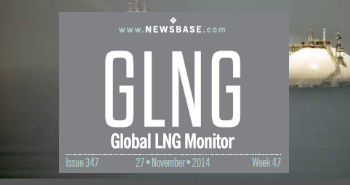QatarEnergy pauses sending LNG vessels via the Red Sea amid Houthi attacks
.jpg)
What: QatarEnergy will no longer dispatch LNG tankers through the Red Sea and will now reroute around the Cape of Good Hope.
Why: With Yemen’s Houthi militia attacking merchant ships in the Red Sea, the shortest shipping route from Asia to Europe is no longer passable.
What Next: Rerouting to an alternative shipping lane such as the Cape of Good Hope will increase time spent at sea causing delivery delays and raising the transportation price and tie-up tankers.
QatarEnergy will pause sending LNG tankers through the Red Sea amid growing security concerns as Yemen’s Iran-back Houthi militia ramp up attacks in the busy shipping lane in support of the Palestinian Islamist group Hamas’ war with Israel, a senior source told Reuters on January 15.
The news comes after three vessels carrying the super-chilled gas from Qatar stopped off the coast of Oman a day earlier after US and British forces carried out sea strikes and air attacks on Houthi targets located in Yemen.
With the US-led Combined Maritime Forces (CMF) warning all merchant ships to not enter the Bab al-Mandab Strait in the southern portion of the Red Sea for several days, QatarEnergy halted the Al Ghariya, Al Huwaila and Al Nuaman off the coast of Oman.
Ship-tracking data on January 16 from ICIS and Kpler showed that the three tankers carrying LNG for QatarEnergy were back on the move. The vessels were still signalling their destination as Europe; however, they had altered their route and were travelling south to pass around the Cape of Good Hope.
Now with the vessels in motion again, the estimated time of arrival has been pushed back to February 7.
Rerouting to this alternative route will bring delivery delays and raise the cost of transportation of its cargoes, while also occupying tankers for longer. The Red Sea route is the fastest shipping lane from Asia to Europe.
Circumnavigating the African continent increases the delivery time by about 9 days. Prior to the volatile situation emerging in the Red Sea, the journey from Qatar to Europe lasted 18 days.
A trader told Reuters that the extra distance and time at sea could hike up the price of the LNG by between €1 and €1.30 per MWh. However, LNG developers would save the cost of the fees for using the Suez Canal.
Fortunately for LNG purchasers, the disruption comes at a time when spot LNG prices have dipped. High gas inventories in Europe have been stockpiled ahead of the winter season and the EU’s gas storages were still 78% full as of January 16 according to Gas Infrastructure Europe (GIE).
On January 12 the Spark Northwest European delivered ex-ship (NWE DES) LNG price for February delivery was assessed at $9.081 per million British thermal units (mmBtu), while also at a discount to the Dutch Title Transfer Facility (TTF) of $0.805/mmBtu.
That figure is down from January 5, when the NEW DES LNG price for February delivery was assessed at $9.872/mmBtu, which is also at a discount of $0.855/mmBtu to the Dutch TTF hub’s February gas price.
Similarly, LNG freight rates dipped on January 12 for the sixth consecutive week with the Spark30S Atlantic rate for tankers of 174,000 cubic metres plunging below $100,000 per day to $83,500 per day, a level not seen in five months. On January 5, LNG freight rates for the Spark30S Atlantic were at $108,500 per day.
Meanwhile, the Spark 25S Pacific rate plummeted to $66,000 per day on January 12, dropping from $80,250 per day.
However, with the Panama Canal backed up and the Red Sea becoming increasingly unsafe, LNG freight rates are poised to climb.
About 12% of global shipping traffic passes through the Red Sea. According to S&P estimates, LNG cargoes from QatarEnergy pass through the Suez Canal at 14.8mn tonnes per year (tpy).
Qatar is the biggest user of the Suez Canal among LNG exporters, with US cargoes coming in second at 8.8mn tpy, and Russian cargoes in third place at 3.7mn tpy.
Nevertheless, despite the shock on the LNG shipping industry caused by Red Sea tensions, the market appears to be in a strong position to absorb additional costs and delays from rerouting cargoes as inventory levels remain high in both Europe and Asia and are forecast to remain at a comfortable level amid economic slowdowns in both Europe and China.
Europe’s gas supply is safely stocked for now, but expect to see US LNG suppliers be prioritized for as long as the Red Sea remains unsafe to pass.
This article first appeared at Newsbase.com, a global energy publication that covers the major oil, gas, LNG, power and renewables developments from around the world on a daily basis. Contact sales@intellinews.com if you would like a free two-week trial to Newsbase.





Follow us online